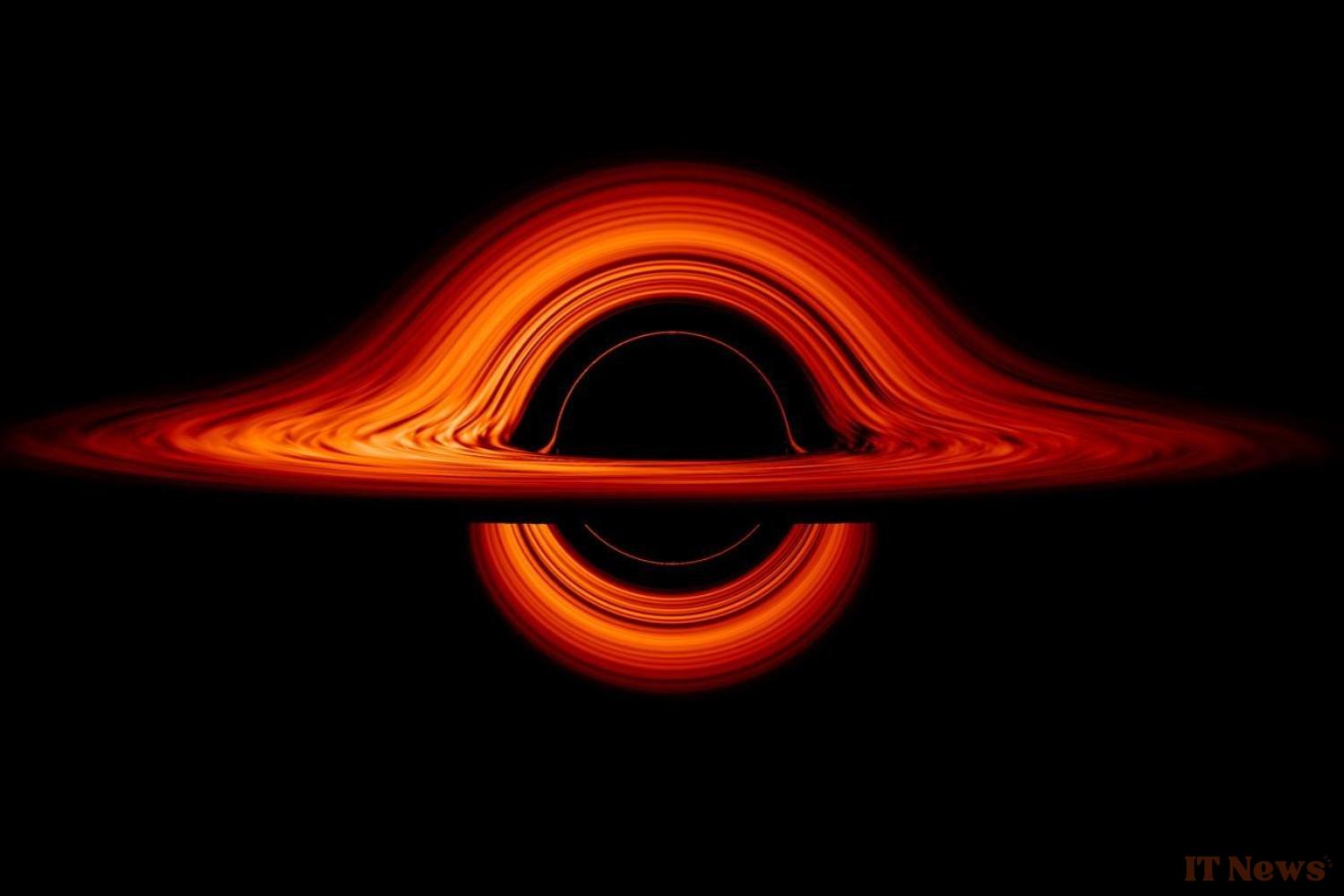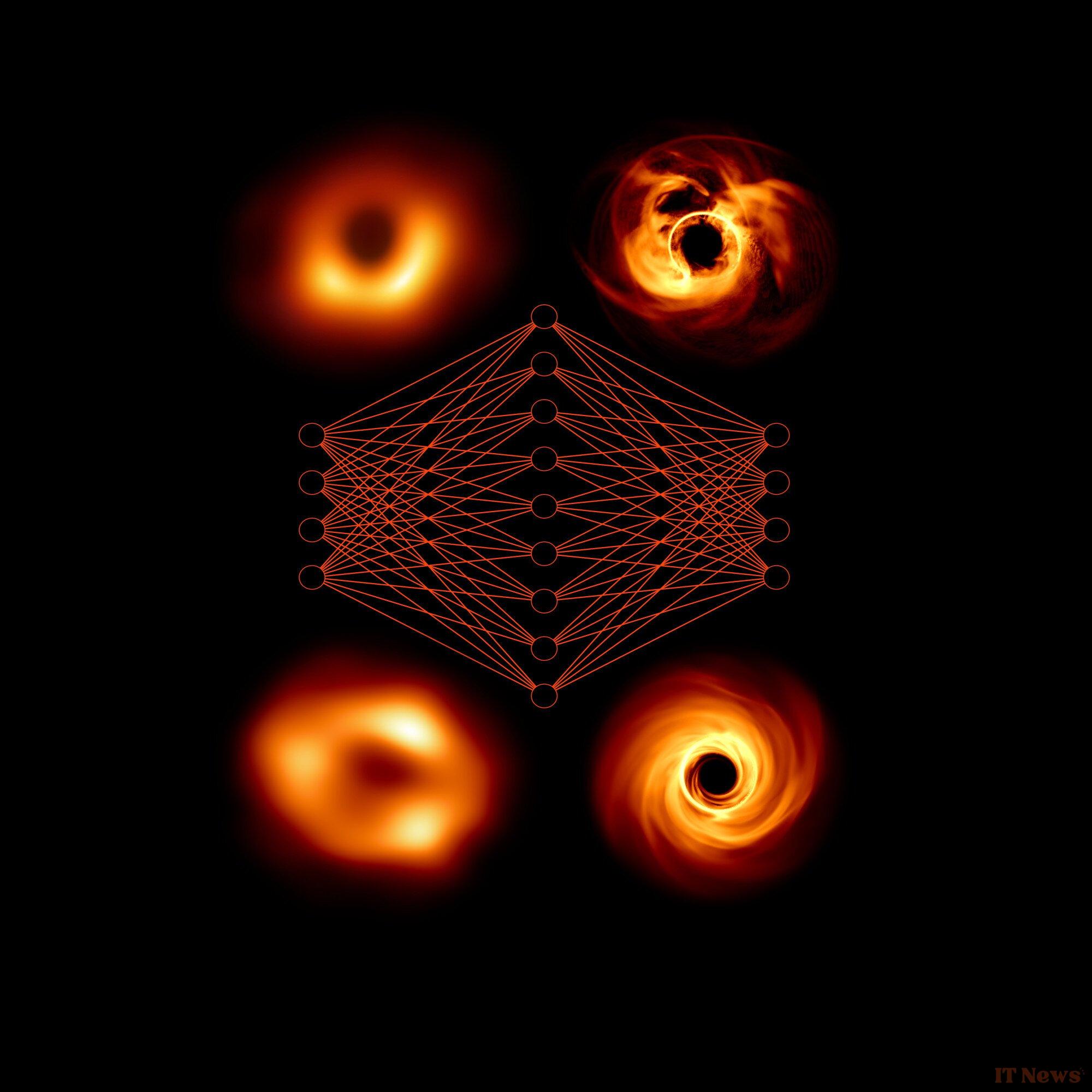Black holes are among the most fascinating objects in our universe, and are suspected of holding the key to some of the most important mysteries in modern astronomy. Unfortunately, we still have great difficulty studying them satisfactorily; since, by definition, they cannot be observed directly, specialists must make do with indirect information that is often difficult to interpret.
Recently, an international team of astronomers therefore opted for another approach: training an artificial neural network with millions of black hole simulations to better understand their behavior.
This work is largely based on data collected by the Event Horizon Telescope (EHT). This is a huge network of highly specialized radio telescopes designed to image the silhouettes of supermassive black holes that reside at the centers of galaxies. It has already contributed to many groundbreaking projects, including the first-ever direct images of supermassive black holes in the M87 galaxy and the Milky Way (or more precisely, the disks of superheated material that surround the event horizon).
Historic: Here's the first-ever photo of the Milky Way's black hole!
These images caused a huge stir in the scientific community. They contain a large amount of new and extremely valuable information that helps astronomers understand the behavior of these cosmic behemoths.
But as striking as they are, these images represent only the tip of a huge iceberg of dense, rich, and very difficult to interpret data.
Machine learning to the rescue
It is to extract as much information as possible that researchers have chosen to turn to machine learning, a technology that is particularly effective when it comes to processing huge, complex data sets.
The The problem is that these AI applications require a huge amount of data to produce usable results. Even the mountain of information collected by the EHT is largely insufficient in this context. To train their model, the study authors chose to provide it with synthetic data—simulated models showing what black holes seen by the EHT might look like by varying different parameters such as rotation, orientation, or magnetic field properties.
This approach solves the problem of the quantity of data — but it also brings up another, and not a minor one. Since we are dealing with synthetic data, how can we ensure that they accurately reflect reality? Can we really trust the results, even if these simulations are based on physical principles that have been rigorously tested for decades?
To reduce the uncertainty inherent in this approach, the authors chose to use a specific type of model, called Bayesian. This term refers to a neural network that, instead of producing a single fixed prediction, gives a whole range of possible outcomes, each with a probability. They were thus able to sort between the most consistent simulations and those that were too far-fetched to be usable. This approach allowed the neural network to reveal the links that exist between the observed data and the behavior of black holes, thus linking theory to observations.
Fascinating and sometimes disturbing results
At the end of the process, the researchers were able to feed this now-trained model with real observational data captured by the EHT. And in return, it allowed them to make several very interesting predictions about the dynamics of Sagittarius A*, the black hole at the center of the Milky Way.
The results contain several very interesting pieces of information. For example, the model seems to confirm that Sagittarius A* rotates at a very high speed, close to the theoretical limit for this type of celestial body. This hypothesis had already been put forward by various teams of physicists. But this work now shows that, among the many simulated possibilities, this very rapid rotation is the one that statistically best matches the real data.
But above all, the model has also produced some predictions which, unlike the one cited above, go completely against the most popular theories at the moment.
For example, it indicates that the radiation near the black hole would be caused not by the jet of matter emanating from it, but rather by the movements of extremely hot electrons orbiting around it. Furthermore, it appears that the magnetic field surrounding the accretion disk—the disk of superheated material surrounding the event horizon—behaves differently from conventional theories.
“Challenging the prevailing theory in this way is exciting,” says Michael Janssen, lead author of the study.
Simulations will never replace observation.
He emphasizes, however, that this is only a first step. As always with work based on simulations, there remains a significant amount of uncertainty that will need to be reduced by improving the models and collecting more real data.
To achieve this, Janssen and his team are counting in particular on the Africa Millimeter Telescope, a new radio telescope currently under construction in Namibia, which will soon reinforce the EHT's observation capabilities. "We will obtain even better information to validate the general theory of relativity for supermassive compact objects with great precision," the astrophysicist enthuses.
It will therefore be important to continue to closely monitor the EHT's work; it will undoubtedly continue to provide us with fascinating information on these objects, which play a decisive role in the overall dynamics of the cosmos.




0 Comments